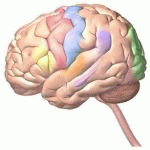Neurology
|
22 august 2015 13:46:54 |
| Insulin and IGF1 signalling pathways in human astrocytes in vitro and in vivo; characterisation, subcellular localisation and modulation of the receptors (Molecular Brain) |
|
Tweet Background:
The insulin/IGF1 signalling (IIS) pathways are involved in longevity regulation and are dysregulated in neurons in Alzheimer’s disease (AD). We previously showed downregulation in IIS gene expression in astrocytes with AD-neuropathology progression, but IIS in astrocytes remains poorly understood. We therefore examined the IIS pathway in human astrocytes and developed models to reduce IIS at the level of the insulin or the IGF1 receptor (IGF1R).
Results:
We determined IIS was present and functional in human astrocytes by immunoblotting and showed astrocytes express the insulin receptor (IR)-B isoform of Ir. Immunocytochemistry and cell fractionation followed by western blotting revealed the phosphorylation status of insulin receptor substrate (IRS1) affects its subcellular localisation. To validate IRS1 expression patterns observed in culture, expression of key pathway components was assessed on post-mortem AD and control tissue using immunohistochemistry. Insulin signalling was impaired in cultured astrocytes by treatment with insulin + fructose and resulted in decreased IR and Akt phosphorylation (pAkt S473). A monoclonal antibody against IGF1R (MAB391) induced degradation of IGF1R receptor with an associated decrease in downstream pAkt S473. Neither treatment affected cell growth or viability as measured by MTT and Cyquant® assays or GFAP immunoreactivity.DiscussionIIS is functional in astrocytes. IR-B is expressed in astrocytes which differs from the pattern in neurons, and may be important in differential susceptibility of astrocytes and neurons to insulin resistance. The variable presence of IRS1 in the nucleus, dependent on phosphorylation pattern, suggests the function of signalling molecules is not confined to cytoplasmic cascades. Down-regulation of IR and IGF1R, achieved by insulin + fructose and monoclonal antibody treatments, results in decreased downstream signalling, though the lack of effect on viability suggests that astrocytes can compensate for changes in single pathways. Changes in signalling in astrocytes, as well as in neurons, may be important in ageing and neurodegeneration. |
| 139 viewsCategory: Neurology |
 Prevalence and correlates of apathy in myotonic dystrophy type 1 (BMC Neurology) Prevalence and correlates of apathy in myotonic dystrophy type 1 (BMC Neurology)Peripheral neurolymphomatosis with tracheal asphyxia: a case report and literature review (BMC Neurology) 
|
| blog comments powered by Disqus |
MyJournals.org
The latest issues of all your favorite science journals on one page
The latest issues of all your favorite science journals on one page



